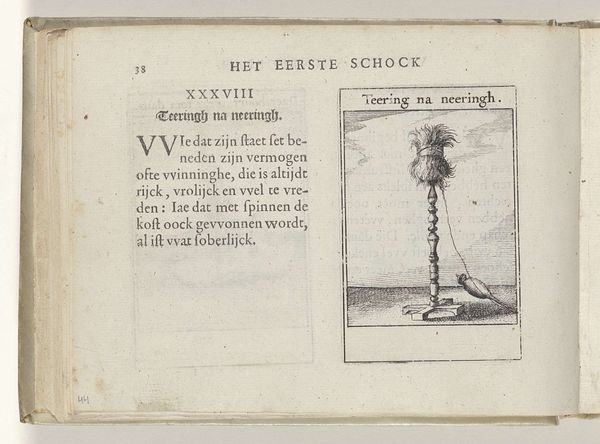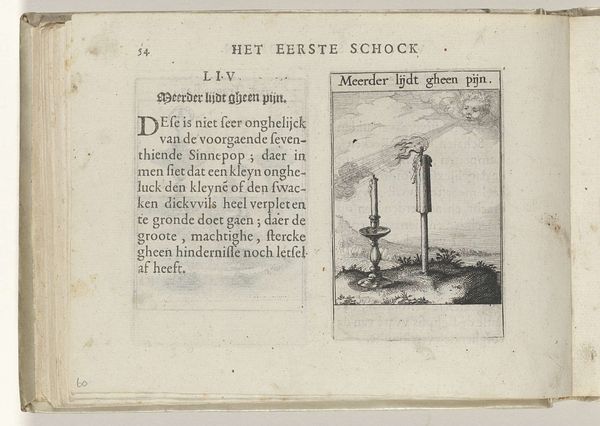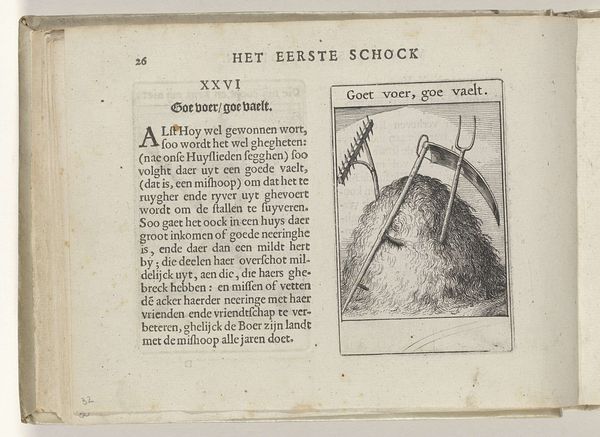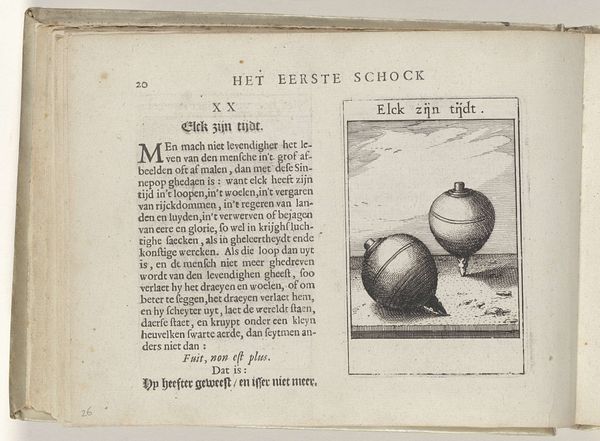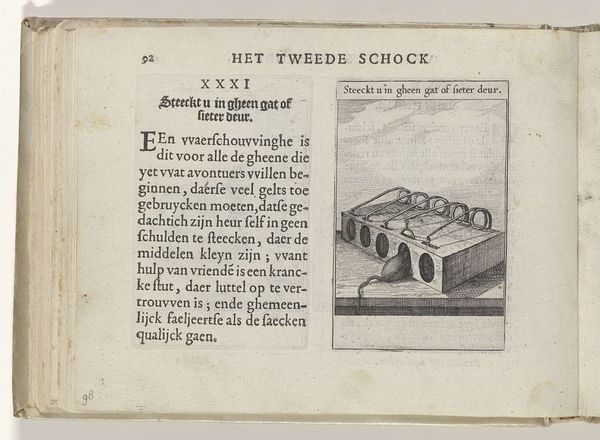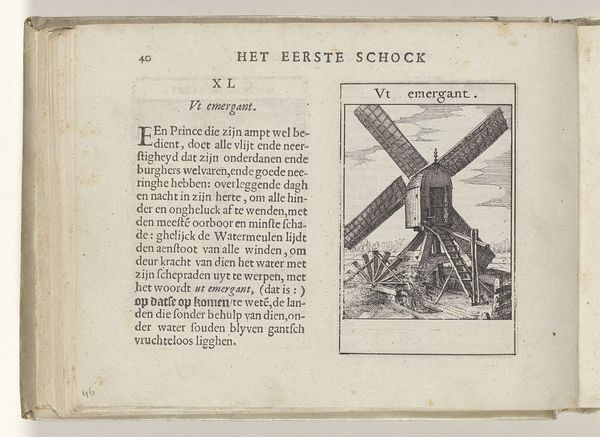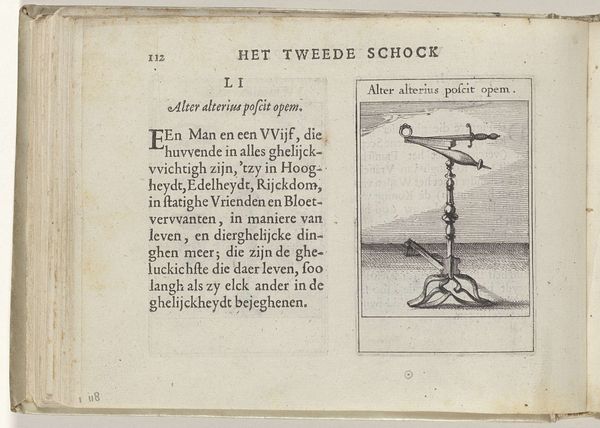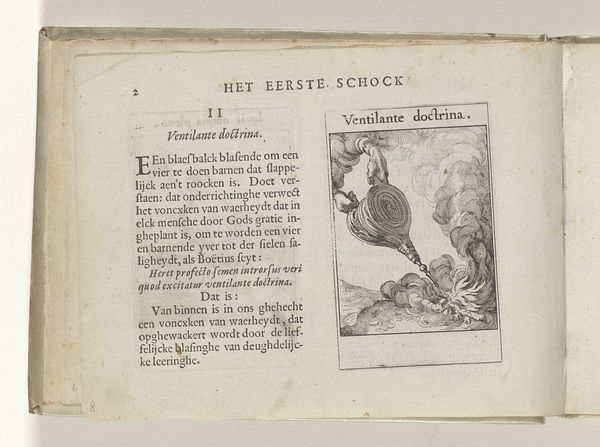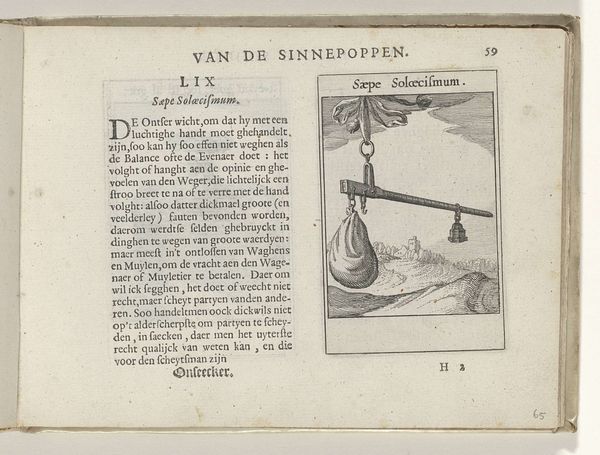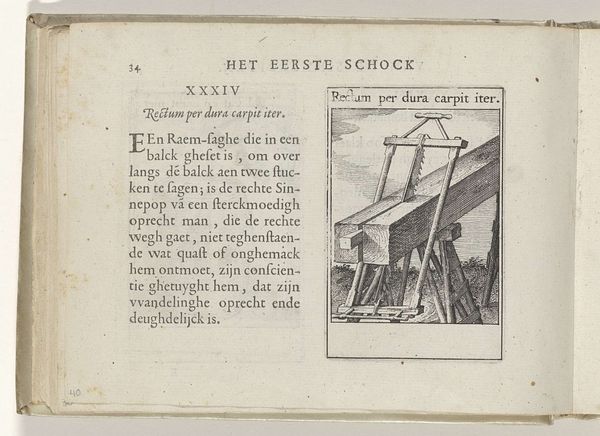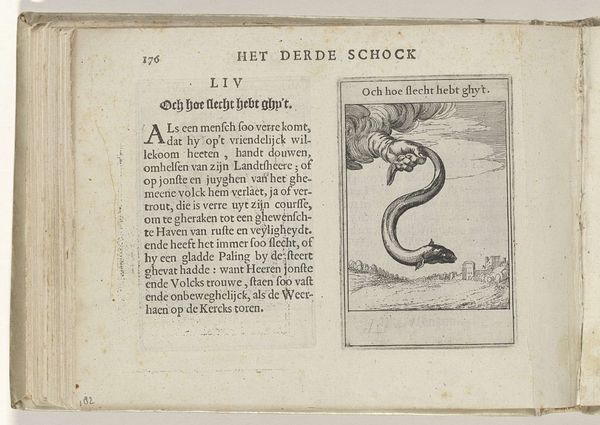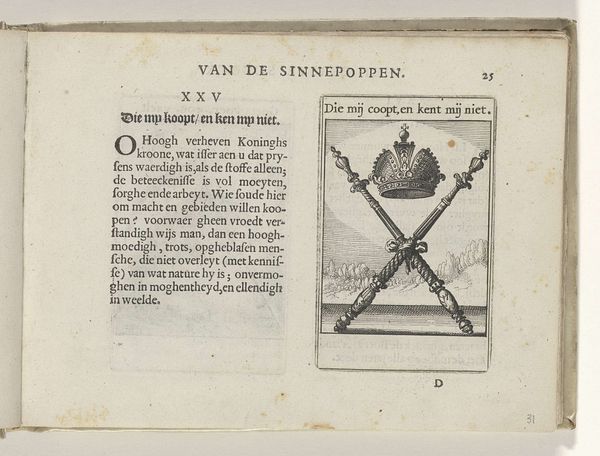
graphic-art, print, engraving
#
graphic-art
#
baroque
#
dutch-golden-age
# print
#
coloured pencil
#
engraving
Dimensions: height 137 mm, width 188 mm, height 95 mm, width 60 mm
Copyright: Rijks Museum: Open Domain
Curator: Here at the Rijksmuseum, we have a fascinating print by Roemer Visscher, titled "XVI Galijck en mewarich," created in 1614. It's an engraving, typical of the Dutch Golden Age. What strikes you immediately about it? Editor: It feels...constrained. The tight lines, the verticality of the image within the page—it’s visually quite rigid. The central image reminds me of some strange measuring device. Curator: That’s a keen observation. Visscher was deeply interested in the balance between justice and mercy, and this image embodies that theme. The text around the print speaks of not adhering strictly to justice, but acting in accordance with fairness mixed with reason. Editor: So the measuring device you described, this weighing instrument, is it meant to visualize that balance? It evokes for me not just justice, but also the social context of its measurement and distribution. Curator: Precisely. Visscher lived in a time of considerable social and economic change in the Netherlands. This engraving invites the viewer to contemplate the nuanced application of moral principles during that period. The act of engraving itself, too, became a way to circulate such ideas across the merchant class. Editor: I see that. The clean lines suggest a reproducibility, and access for a larger portion of the population beyond just painting's patrons. And the scale - given it is bound into a book - suggests a certain intimacy; personal interpretation as much as social commentary is brought into play here. It challenges the boundaries of labor and access to moral guidance, doesn’t it? It feels both refined and deliberately commonplace. Curator: Yes, it seeks to engage in public moral debates that are made ever more urgent and intimate. What does this work make us ask about who had access to fairness during the Golden Age? Whose scales were calibrated justly? Editor: Indeed. It also leaves me wondering about the materials Visscher might have used and the labor processes involved. And how these prints were valued as objects of moral contemplation. Curator: "XVI Galijck en mewarich" isn’t just an aesthetic artifact. It's a testament to the cultural dialogues and evolving value systems of the Dutch Golden Age, made available via innovative and widely distributed processes of printmaking. Editor: Absolutely, thinking about how the means of making impacted both access to art and the societal conversations it engendered makes it truly striking to consider.
Comments
No comments
Be the first to comment and join the conversation on the ultimate creative platform.

